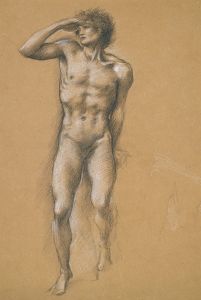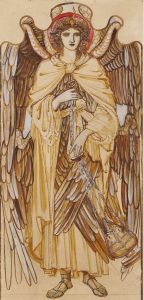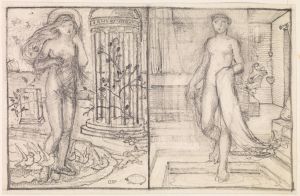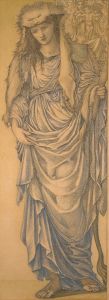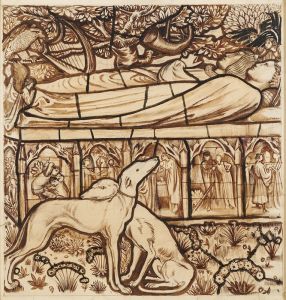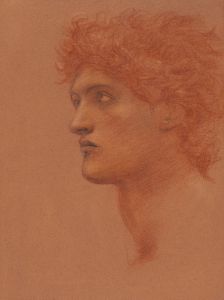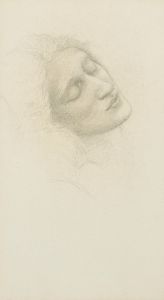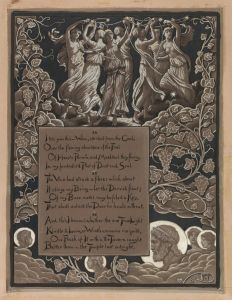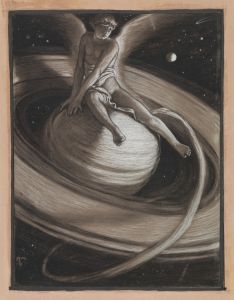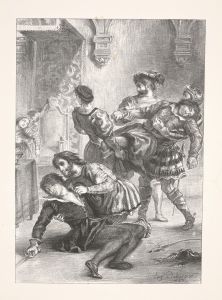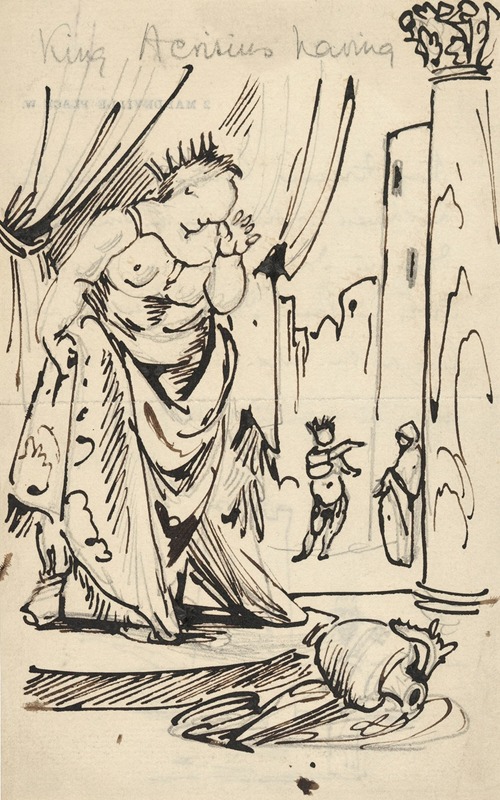
King Acrisius, The Rubens Version
A hand-painted replica of Sir Edward Coley Burne-Jones’s masterpiece King Acrisius, The Rubens Version, meticulously crafted by professional artists to capture the true essence of the original. Each piece is created with museum-quality canvas and rare mineral pigments, carefully painted by experienced artists with delicate brushstrokes and rich, layered colors to perfectly recreate the texture of the original artwork. Unlike machine-printed reproductions, this hand-painted version brings the painting to life, infused with the artist’s emotions and skill in every stroke. Whether for personal collection or home decoration, it instantly elevates the artistic atmosphere of any space.
"King Acrisius, The Rubens Version" is a painting by the British artist Sir Edward Coley Burne-Jones, a prominent figure in the Pre-Raphaelite Brotherhood and the later Aesthetic Movement. Born in 1833, Burne-Jones was known for his romantic and often medieval-themed works, which were characterized by their elaborate detail, rich colors, and intricate compositions.
The painting "King Acrisius, The Rubens Version" draws its subject from classical mythology, specifically the story of King Acrisius of Argos. According to Greek mythology, Acrisius was the father of Danaë and the grandfather of Perseus. The myth recounts that Acrisius, having been warned by an oracle that he would be killed by his grandson, imprisoned his daughter Danaë to prevent her from bearing children. However, Zeus visited Danaë in the form of golden rain, resulting in the birth of Perseus. Acrisius's attempts to thwart fate ultimately failed, as Perseus grew up to fulfill the prophecy.
Burne-Jones's interpretation of this myth is influenced by the works of Peter Paul Rubens, a Flemish Baroque painter known for his dynamic compositions and vibrant use of color. The title "The Rubens Version" suggests that Burne-Jones was inspired by Rubens's approach to similar mythological themes, though he reinterpreted them through his own distinctive style.
The painting likely features the characteristic elements of Burne-Jones's work, such as elongated figures, a dreamlike atmosphere, and a meticulous attention to detail. His use of color and light would have been carefully considered to evoke the emotional and narrative depth of the myth. The composition would be expected to reflect his interest in medieval and classical themes, blending them with the aesthetic ideals of the late 19th century.
Burne-Jones's work was highly influential in his time, contributing to the broader movements of the Pre-Raphaelites and the Aesthetic Movement. His paintings often explored themes of beauty, mythology, and romance, and "King Acrisius, The Rubens Version" would be a representative example of these interests.
Unfortunately, specific details about the painting, such as its dimensions, current location, and the exact date of its creation, are not readily available. However, it can be assumed that the work reflects Burne-Jones's broader artistic goals and his engagement with both classical mythology and the legacy of earlier artists like Rubens.
In summary, "King Acrisius, The Rubens Version" by Sir Edward Coley Burne-Jones is a painting that exemplifies the artist's fascination with mythological themes and his admiration for the works of Peter Paul Rubens. Through his unique style, Burne-Jones reinterprets the story of King Acrisius, contributing to the rich tapestry of 19th-century British art.







